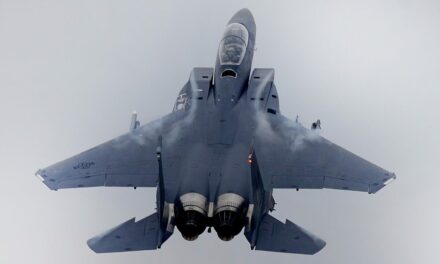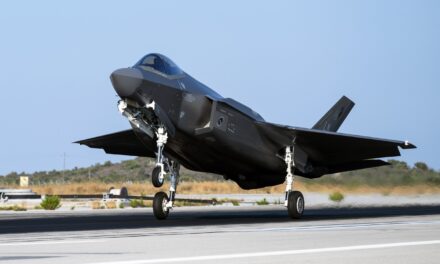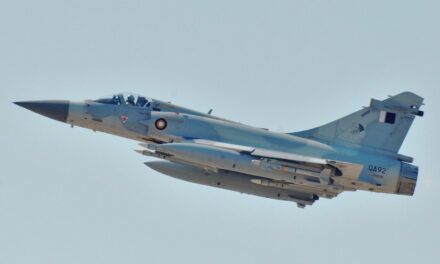We support our Publishers and Content Creators. You can view this story on their website by CLICKING HERE.
Key Point: The Rubis-class submarines, operated by the French Navy, are compact yet potent nuclear-powered fast-attack vessels.
(Jan. 25, 2020) The aircraft carrier USS Theodore Roosevelt (CVN 71) transits the Pacific Ocean Jan. 25, 2020. The Theodore Roosevelt Carrier Strike Group is on a scheduled deployment to the Indo-Pacific. (U.S. Navy photo by Mass Communication Specialist Seaman Alexander Williams)
-Known for their stealth and versatility, these subs gained fame during a 2015 exercise where the Rubis-class Saphir “sank” the USS Theodore Roosevelt and its carrier group, highlighting the Rubis-class’s capabilities against advanced anti-submarine defenses.
-Initially commissioned in the 1980s, the Rubis-class is being replaced by the more advanced Suffren-class, though three Rubis-class subs remain active.
-Despite their age and small size, their proven performance, particularly in stealth operations, underscores their importance in NATO missions and global naval strategy.
France’s Rubis-Class Submarines: Small But Lethal Underwater Warriors
You may not have heard much about the Rubis-class submarine and that is just how the French navy likes it.
France likes to keep it zipped about their subs, and the Rubis-class is noteworthy for its secretive nature.
The Rubis-class subs operate out of the Mediterranean port of Toulon. Three of the Rubis-class boats have their home here. They are nuclear-powered fast attack subs but are not large having a crew of only 70 sailors.
While they might get some negative press for being smaller and older, they have proven to be quite powerful below the waves.
Rubis-Class: France’s Workhorse Sub
The Rubis class has been busy since the Russian invasion of Ukraine. NATO navies are awake now, which means more work for the Rubis class. They usually patrol with France’s Charles De Gaulle aircraft carrier, which has also seen a high operational tempo in the last few years.
Making Weigh for a New Class
Rubis-class subs were initially built in the 1980s and the new Suffren-class of fast attack boats will replace them. The second Suffren-class, the Duguay Trouin, went into service this spring. The first of the class began missions in 2022. By 2030, France will have four more Suffren-class subs.
There are only three Rubis-class boats left in the fleet. Three other Rubis-class subs have already gone by the wayside: the Saphir in 2019, the Rubis in 2022 and the Casabianca in 2023.
Not a Large Boat
The Rubis-class is only 241 feet long and 25 feet wide. The subs displace just 2,600 tons underwater. The boats are propelled by the K48 pressurized water nuclear reactor with one shaft and one propellor. Their top speed is 25 knots.
Armaments include four 21-inch torpedo tubes that launch F17 Mod.2 heavy torpedoes. The boat carries Exocet SM39 sea-skimming missiles.
Reputation Shaped By Famous Event
The Rubis-class is best known for “sinking” a U.S. aircraft carrier in 2015 during an exercise in the North Atlantic. This was after the French navy modernized the Rubis-class and made it stealthier with improved sonar and guidance systems.
What Happened During the Exercise? Rubis vs. Aircraft Carrier
During the drill, the Rubis submarine Saphir was patrolling with the Nimitz-class carrier USS Theodore Roosevelt, initially in concert with aerial operations from the carrier. As the exercise continued, the Saphir switched to the enemy force on day two.
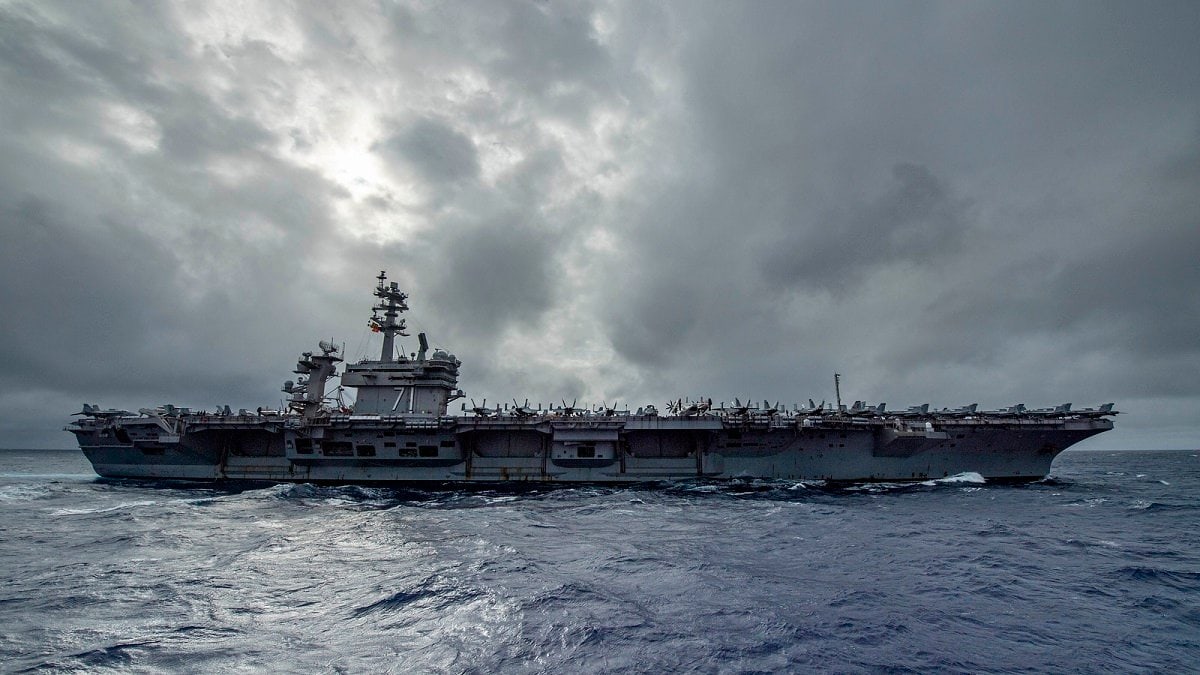
PACIFIC OCEAN (Jan. 12, 2021) The aircraft carrier USS Theodore Roosevelt (CVN 71) transits the Pacific Ocean, Jan. 12, 2021. The Theodore Roosevelt Carrier Strike Group is on a scheduled deployment to the U.S. 7th Fleet area of operations. As the U.S. Navy’s largest forward deployed fleet, with its approximate 50-70 ships and submarines, 140 aircraft, and 20,000 Sailors in the area of operations at any given time, U.S. 7th Fleet conducts forward-deployed naval operations in support of U.S. national interests throughout a free and open Indo-Pacific area of operations to foster maritime security, promote stability, and prevent conflict alongside 35 other maritime nations and partners. (U.S. Navy photo by Mass Communication Specialist 3rd Class Jason Waite) 210112-N-SS350-1028.
The cost to build this aircraft carrier was over $4.5 billion.
Somehow, Saphir could evade the Theodore Roosevelt and its screening anti-submarine warships and airplanes. Saphir was then deemed the “winner” of the simulated attack.
This is surprising because the Rubis-class was originally considered noisy for such a small boat. So, the French re-fitted and lengthened the hull. The first Rubis-class boat was commissioned in 1983, then the Saphir followed in 1984.
The Rubis-class Is Noteworthy
Rubis subs are curious little boats. It is surprising how well they have performed over the years. Winning any simulation against the U.S. Navy is to be commended. It’s difficult to outsmart an American carrier strike group with many vessels and airplanes devoted to sniffing out the best and most silent enemy submarines. Somehow, the Saphir could sail the gauntlet and evade detection against the Theodore Roosevelt.
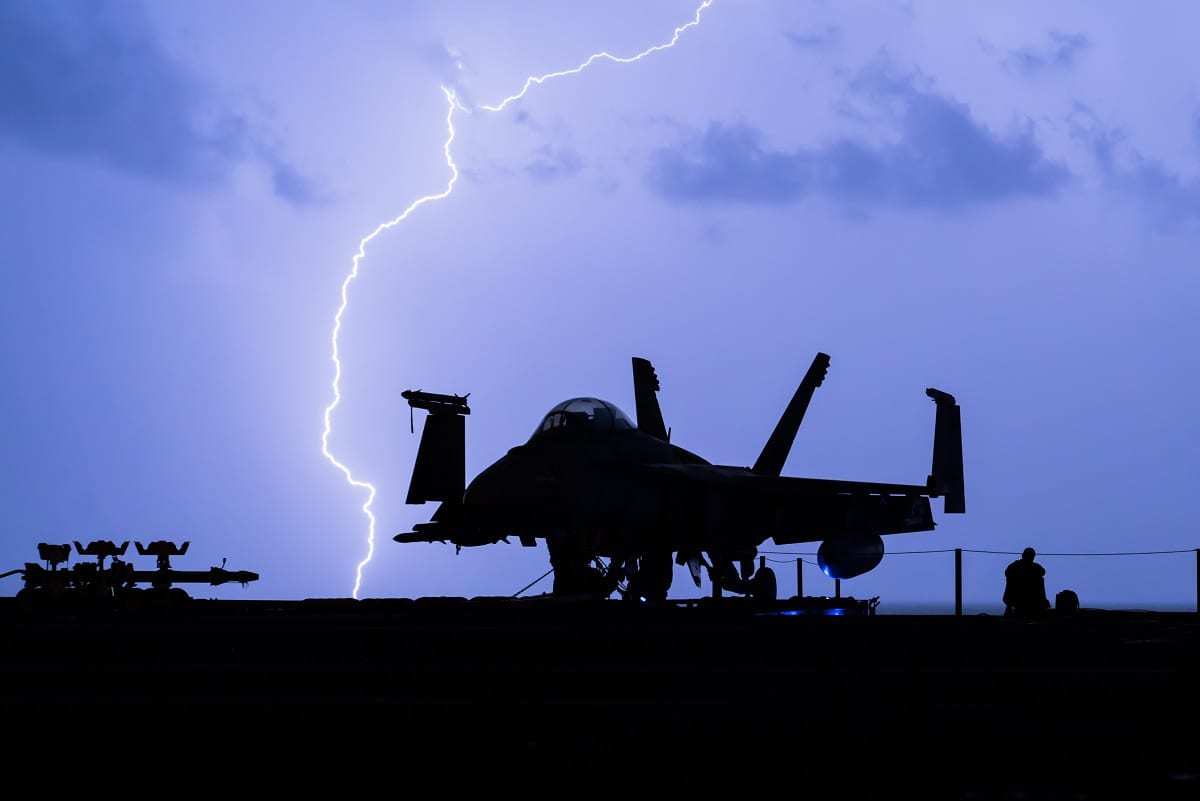
ARABIAN GULF (Dec. 16, 2017) Lightning strikes near the aircraft carrier USS Theodore Roosevelt (CVN 71) as it transits the Arabian Gulf. Theodore Roosevelt and its carrier strike group are deployed to the U.S. 5th Fleet area of operations in support of maritime security operations to reassure allies and partners and preserve the freedom of navigation and the free flow of commerce in the region. (U.S. Marine Corps photo by 1st Lt. Mark Vetere/Released)171216-M-DI829-1001.
China Is Taking Notes
This event is exciting to the Chinese navy. Getting one submarine inside the defensive array of an American carrier strike group would be the essence of asymmetrical warfare. It likely gives the People’s Liberation Army Navy confidence that it could replicate the actions of a Rubis-class.
Maybe the French will keep the Rubis-class around longer than planned. The sub can obviously operate in stealth mode. It is small and well armed. We will keep an eye on this Rubis-class sub. The boats may continue to conduct operations with NATO and will likely play more war games with American vessels.
Hopefully, the U.S. Navy learned its lesson while operating against smaller subs like the Saphir.
About the Author: Dr. Brent M. Eastwood
Brent M. Eastwood, PhD, is the author of Don’t Turn Your Back On the World: a Conservative Foreign Policy and Humans, Machines, and Data: Future Trends in Warfare, plus two other books. Brent was the founder and CEO of a tech firm that predicted world events using artificial intelligence. He served as a legislative fellow for U.S. Senator Tim Scott and advised the senator on defense and foreign policy issues. He has taught at American University, George Washington University, and George Mason University. Brent is a former U.S. Army Infantry officer. He can be followed on X @BMEastwood.
Note: The main image is of the USS America sunk in U.S. Navy-controlled demolition.

 Conservative
Conservative  Search
Search Trending
Trending Current News
Current News 